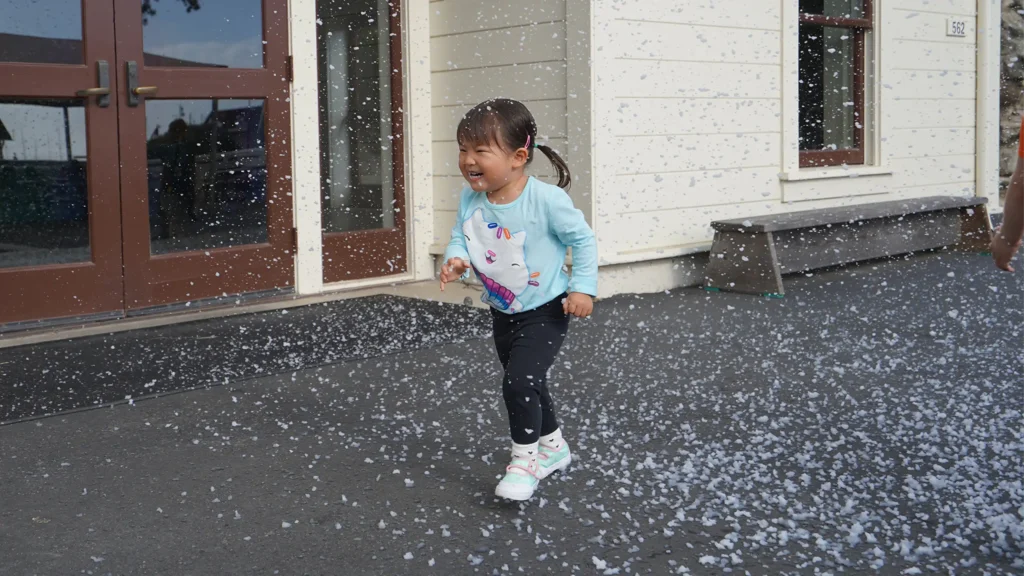
Materials Required
- Leaves of various sizes/colors
- Colored construction paper and scissors
- Small rectangular mirrors
- Glue sticks
- White construction paper
- Pens/markers
- Colored pencils/crayons
Instructions
- Gather large symmetrical leaves of different varieties. Carefully cut each leaf in half down its line of symmetry. If leaves are not available, cut shapes out of construction paper (e.g. stars, hearts, circles, or leaves), and then cut them in half.
- Ask children what they already know about symmetry: What does it mean when something is symmetrical? Can you think of something symmetrical in nature?
- Ask children to pick one leaf half and visualize what the other half of the leaf could look like.
- Have children set a mirror on the table and press the stem-side of the leaf against it. Let them describe what they see in the mirror. They can also experiment with holding up the half-hearts or half-stars against the mirror and observing the reflected shape.
- Invite children to use the glue sticks to secure a leaf half onto their paper (it is recommended that they put glue stick on paper and press leaf down, instead of trying to put glue on leaf).
- Exercising their visualization skills, let children use pens and markers to complete the missing half of the leaf.
- After the children have tried mirroring the original leaf half, try it again, only this time encourage them to make the second half completely different than the original. How wacky can this leaf look? Be imaginative and create a unique leaf.
Additional Tips
Try these add-on activities:
- Ask children: What other natural objects (e.g. butterfly) can you think of that have symmetry? Gather them outside if possible and use the mirrors to explore symmetry, create the other half, and then create a wacky second half.
- Lead a discussion about symmetry in design: When do designers or artists intentionally choose to use symmetry, and when do they intentionally choose not to use symmetry? What are some reasons they might make each choice?
- If children are not familiar with the concept of symmetry, make sure to highlight the term:
- Symmetry: the quality of being made up of exactly similar parts facing each other or around an axis.
Links to Research
Creativity often occurs in spite of clear rules or well-defined problems. Observing and recognizing patterns is one way that our minds discover rules and understand what is the norm. Once we understand this, creativity includes generating what Arthur Cropley called effective novelty (1999), where we take into consideration what is appropriate, but also generate unconventional solutions. Playing with the symmetry of leaves is an elegant practice for engaging in pattern recognition, which can free children to manipulate those patterns creatively (Root-Bernstein & Root-Bernstein, 1999). More explicitly, the additional steps of this activity, where children (and adults!) interpret what could be the mirrored side of a symmetrical image, is a clever way to be creative.
Supporting research includes:
Cropley, A. J. (1999). Creativity and cognition: Producing effective novelty. Roeper Review, 21(4), 253-260.
Root-Bernstein, R., & Root-Bernstein, M. (1999). Sparks of Genius : The Thirteen Thinking Tools of the World’s Most Creative People. Boston: Houghton Mifflin.






